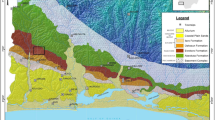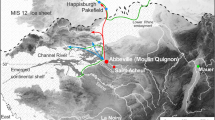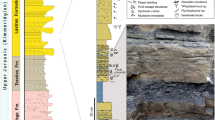Abstract
DURING October 1954, Mr. C. K. Brain1 discovered 129 trimmed, utilized or damaged stones in situ in the 18-ft. red, gravel-bearing, sandy layer 25 ft. above the australopithecine-carrying grey breccia at the Makapansgat Limeworks site. Of these, seventeen were claimed by Prof. C. van Riet Lowe to be undoubted Developed Kafuan artefacts, fifteen being of deeply leached dolomite, one of vein quartz and one of dark grey quartzite.
This is a preview of subscription content, access via your institution
Access options
Subscribe to this journal
Receive 51 print issues and online access
$199.00 per year
only $3.90 per issue
Buy this article
- Purchase on Springer Link
- Instant access to full article PDF
Prices may be subject to local taxes which are calculated during checkout
Similar content being viewed by others
References
Brain, C. K., Van Riet Lowe, C., and Dart, R. A., Nature, 175, 16 (1955).
Dart, R. A., Amer. J. Phys. Anthrop., N.S., 7, No. 3, 335 (1949).
Dart, R. A., Amer. J. Phys. Anthrop., N.S., 7, No. 2, 187 (1949).
Author information
Authors and Affiliations
Rights and permissions
About this article
Cite this article
DART, R. The First Australopithecine Fragment from the Makapansgat Pebble Culture Stratum. Nature 176, 170–171 (1955). https://doi.org/10.1038/176170a0
Issue Date:
DOI: https://doi.org/10.1038/176170a0
This article is cited by
Comments
By submitting a comment you agree to abide by our Terms and Community Guidelines. If you find something abusive or that does not comply with our terms or guidelines please flag it as inappropriate.



